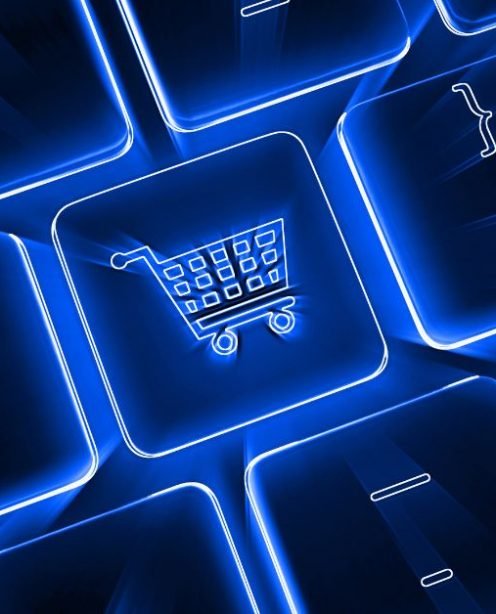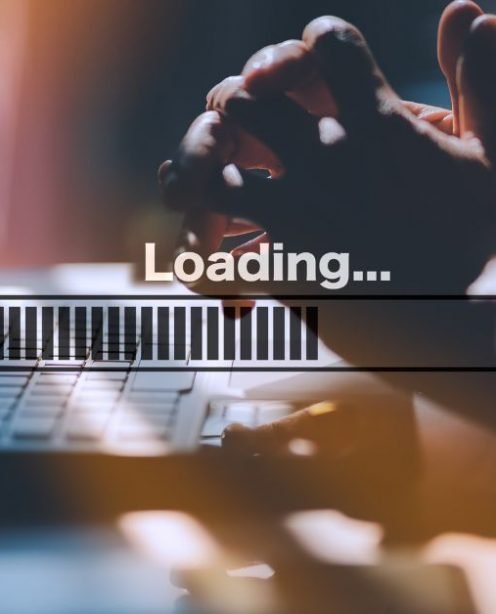After exploring some of the key ways in which you can grow your digital brand in 2018, we’re now turning our attention towards emerging UX design trends that Un.titled’s experienced design team predicts will rise in popularity next year.
UX trends are not all together so easy to predict, we rely on what’s happened in the past and what continues to evolve to help us think about what might be emerging, or where more focus will shift to.
Here’s a few of our ideas on where we think UX will continue to develop.
Smarter use of ‘white space’
Also known as negative space, the area that surrounds other design elements. Sadly, some (not all!) web owners are hell bent on squeezing as much as possible into ‘white space’ areas, mistakenly thinking it is space that looks empty and needs to be filled.
And by the way, white space can be a variety of colours, patterns, textured backgrounds for instance. The use of it helps let the key elements shine and deliver elegance and refinement to a website design.
In 2018, as customers use of online continues to grow in sophistication, savviness, and with mobile usage more prevalent than ever, web visitors are becoming more accustomed to the use of scrolling. The notion of maximising the all important ‘above the fold’ real estate will soften and enable designers to further refine their designs to be more simple (uncluttered!) and balanced, with smart use of white space built in through an entire website design creating a calming effect, letting content ‘breathe’ and helping showcase the key signposts needed for the shopping journey.
For example, designed and developed by Un.titled, Hand & Lock uses blocks of white space to allow the beautiful typography and imagery on the website to breathe. A stripped-back, minimalist header replaces the convoluted headers so often used on the web, with white space guiding the user’s eye every step of the way.
The ever present approach of Mobile first
Early adopters like Facebook have embraced a mobile-first strategy as far back as almost 5 years ago and since then increasingly more online companies have followed suit.
With Google expected to launch its mobile-first index next year, we predict that UX design will also change from delivering a mobile-optimised version of desktop to putting mobile UX at the core of the entire online experience, with web designers starting to mold desktop versions based on mobile.
We also argue that with mobile truly placed at the heart of a web-design, fully optimised responsive design, where UX designers are using data drive methodology to focus fully on mobile in tune with analytics intelligence. Dare we say, reducing the need for a business to invest in a separate mobile app completely. More thought on this at a later date!
Alternative menus
Mobile screen space is a very precious commodity indeed. In recent years designers have depended on hiding navigation behind the burger menu icon. However, in qualitative studies undertaken by NNGroup, they discovered hidden navigation is less findable and may result in slowing down discovery, driving user engagement down and creating confusion.
However, despite this information, hamburger menus continue to be used extremely widely, but there are a few alternatives to consider.
Tab Bar
For companies who have only a few top-level categories, the tab bar as a sticky footer for instance can work well, making the navigation options ever present and fully visibile at all times. However, for many busy ecommerce retailers, it’s not possible to limit their top level navigation to 5 or fewer categories only and word count can be problematic. We think its optimal to use icons with text labels for the best usability and it’s possible to save screen space by implementing the tab bar by appearing only on downward and upward scrolling, plus adding a MORE button enables visitors to access more top level categories.
Full Screen Navigation.
Advocates of this approach see navigation taking up much of the home page real-estate on mobile before scroll. ‘Yelp’ is a good example of this with much of their mobile home page dedicated to their fully open top level navigation. This type of application could work well in service or task orientated industries, a useful way for users to start their journey and continue to refine their search.
These are just two of the alternatives we’re seeing to hamburger menus, but there’s plenty more examples out there. Rather than relying on standard drop-down menus with text, Hype utilises icons of their own clothes in their main menu to make navigation easier for their users.
Henmores is another example of alternative navigation. Rather than demoting their ‘housekeeping’ links to the footer like most websites, Henmores uses a sticky footer menu to provide easy access to these links from anywhere on the site.
There’s no hard and fast rules for sure, but helping users navigate will remain top of the agenda for every UX designer. First time and returning visitors should have no question marks on how to quickly and easily browse and shop the site.
Engaging visuals
With video content on the rise, we expect to see web design embracing more interactive and engaging types of visuals, from gifs to embedded 360 videos, augmented reality and much more. We’ve already done this for A Modern Grand Tour, a website designed and developed by Un.titled which uses a striking full-page video on their homepage to quickly get across the style and ideas that the website is built on.
Next year will be the perfect time for many brands to rethink their image and the way they interact with their audience online and UX design will play a big part of this.
And included in this, we can mention bold typography and colours.
We’re starting to see bold typography and vivid colours making a comeback in web design, helping brands stand out more in an overcrowded digital landscape where gaining the users’ attention (and retaining it!) has become increasingly challenging.
Micro-interactions
A quick introduction to micro-interactions if it’s not something you’re overly familiar with. The are contained product moments, and properly executed should go unnoticed as the web visitor move seamlessly through the website, confident and guided by mico-interactions that communicate a status and provide feedback to action. A few examples of a micro-interaction include liking a post, clicking a button, logging in or hovering over an image. They can make the whole browsing process more fun, entertaining and engaging for your brand if you approach it with some creative flair.
Science in Sport uses subtle micro-interactions on product list pages to provide visual feedback to the user and enhance their experience, communicating ‘loading’ statuses without relying on usual, long-used techniques.
We predict UX designers, including ourselves placing even more emphasis on micro-interactions in 2018.
We love them, as they help bring a feeling of control, they act as a signpost as to what is going on. They really can help you create wider awareness and appreciation of your brand in action (think of Facebook LIKE button with their recognisable thumbs up) We also think they can play an important role to bring pleasure to the user experience, which can drive loyalty and return visits.
Creating little moments that bring a smile or delight your customer is a great result. And our final thoughts here, they are so much more than mere decorations, they serve a real purpose on making navigation seamless, giving users clarity and understanding throughout their online journey with your business.
More sophisticated personalisation
Begone one size fits all approach. If you want to see customers unsubscribe enmasse to your emails, continue sending them irrelevant, one size fits all email campaigns.
By now, users expect to be served with personalised and relevant content that is tailored to their particular interests. Whilst big players such as Netflix have embraced personalisation for some time, in 2018 it will be the turn of smaller online companies to follow suit and deliver increasingly truly personalised digital experiences with the help of UX and UI design.
Personalised UX trends we are starting to see in practice include;
- Age responsive applications that will accommodate typeface sizing and colours based on the age of the browsing user
- Implementation of innovative software products like Nosto and Clerk.io that offer personalisations via product carousels, and embedded into search, social and email marketing. Products like The Filter are including content as well which is very exciting.
- Log in memory facilitates to aid speed of log in
- Push notification timed to coincide with users most active periods in the day.
John Smedley’s official website, designed and developed by Un.titled, makes use of Clerk.io to serve product feeds personalised to each user, based on their prior online behaviour.
Web accessibility
Last but certainly not least, it may not be something new, but as governments are making web accessibility a requirement by law, we expect to see the web becoming increasingly more adaptive to people of different abilities in 2018 and UX design plays a crucial part of achieving this.
Healthy Hearing, a website designed and developed by Un.titled, is heavily focused on easy-of-use and accessibility for its target audience. Utilising larger fonts, high-contrast block colours and large form inputs, Healthy Hearing strikes the perfect balance between aesthetics and accessibility.
Want to know how you can improve your UX design game in 2018? Say [email protected] with your challenge and our UX team will be in touch to see how we can help.





